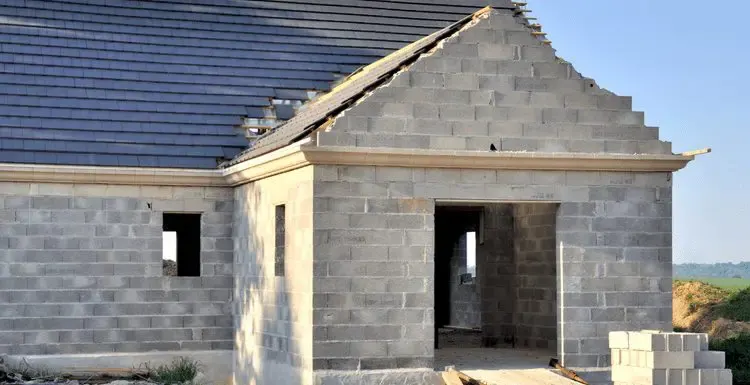Cinder block houses are becoming popular and common, with many people preferring to build them due to their cost-efficiency.
Not only are cinder blocks a better building material than wood, but they also make a good base for a strong and durable house.
In this guide, we’ll discuss features and benefits as well as the pros and cons of a cinder block house, among other things.
Benefits of Cinder Blocks
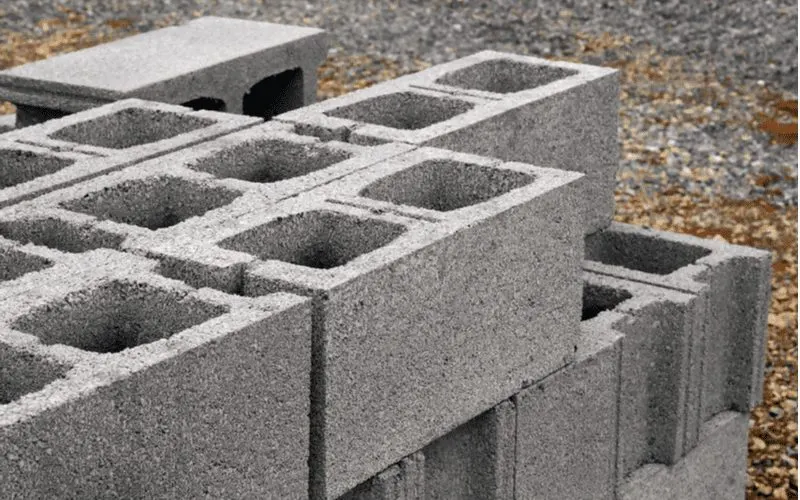
Bodhichita/Shutterstock
Blocks are made using different materials and technologies, with the binding component being concrete. Fillings can be made from environmentally friendly materials such as clay, slag, and other similar elements.
Cinder blocks can last for many years and don’t require regular maintenance compared to other building materials, such as natural wood. In other words, houses made of cinder blocks have a long service life.
It’s also cheaper to build a house with cinder blocks, as you won’t need to hire many experienced experts. Of course, you’ll need to hire building experts to build a structurally solid house, but you should avoid overusing skilled framing experts.
Plus, you won’t have to pay ridiculous prices for lumber.
In addition, you can make cinder blocks at home or get them for cheap from a local store that sells building materials. However, we do not suggest making your own blocks for your home.
You don’t want to build a house from low-grade and fragile blocks, as that’ll have a negative impact on the structural integrity of the entire building. Another benefit of cinder blocks is that they are highly versatile.
You can use them to build a gazebo, flower bed, fence, fireplace, etc. Aside from the benefits of the blocks, let’s discuss the pros and cons of houses made of cinder blocks.
Pros and Cons of Cinder Block Houses
Cinder block houses are becoming popular in many residential areas, and it is easy to spot them due to their distinguished appearance.
However, if you consider building a house of cinder blocks, it is essential to familiarize yourself with its advantages and disadvantages.
Advantages
Let’s discuss the advantages first:
1. Durable and Low Maintenance
Cinder blocks are a solid building material, which means that if a house is built professionally by experts, it can last a long time.
The good thing is that they can withstand hurricanes and strong winds.
Of course, if you are in an area that experiences such weather elements, you should use high-quality reinforcement materials, such as steel rods, when building.
Additionally, they don’t need a lot of maintenance, and repairs are easy to fix. For example, it’s easy and affordable to repair cracks.
2. Cheaper to Build
Houses made of cinder blocks take a shorter time to complete than those made of materials such as wood and concrete blocks.
The shortened time means a low cost of labor. Also, unlike framing, most of the labor doesn’t need to be skilled.
Additionally, the fact that the blocks don’t need a lot of cement to interlock reduces the overall cost of constructing cinder block houses.
This is especially important now, as lumber costs soar, making traditional homes prohibitively expensive to build.
Other Benefits
- They don’t attract insects and rodents.
- They aren’t as susceptible to mold formation, so you might not need to treat them with protective solutions.
- Cinder blocks have excellent noise insulation properties. Not to mention, they are heat-absorbing materials, meaning that they’ll keep your home cool during the summer.
Disadvantages
Houses made from cinder blocks do have some drawbacks, including:
- Not aesthetically appealing at first. Before building a house with cinder blocks, remember that they won’t be attractive at first, but the final product will be aesthetically pleasing and unique.
- The installation of cables and pipes on cinder blocks is challenging. Artisans have to use special tools to install lines into blocks discreetly.
- If you are using hollow cinder blocks, you’ll need to fill them with slag to improve their thermal insulation ability, which is pretty involved.
- If you use hollow blocks that need backfilling, it won’t be possible to build a high-rise building, as the structure may be too heavy.
- Cinder blocks lack precise geometry, which means you’ll need to file and grind them to make their surfaces smooth.
Overall, the advantages of building a cinder block house outweigh the disadvantages. Many of these problems are easy to fix and avoid using appropriate materials, tools, and technology to construct cinder blockhouses.
Now let’s talk about the different types of cinder blocks you can use to build a house.
Types of Cinder Blocks
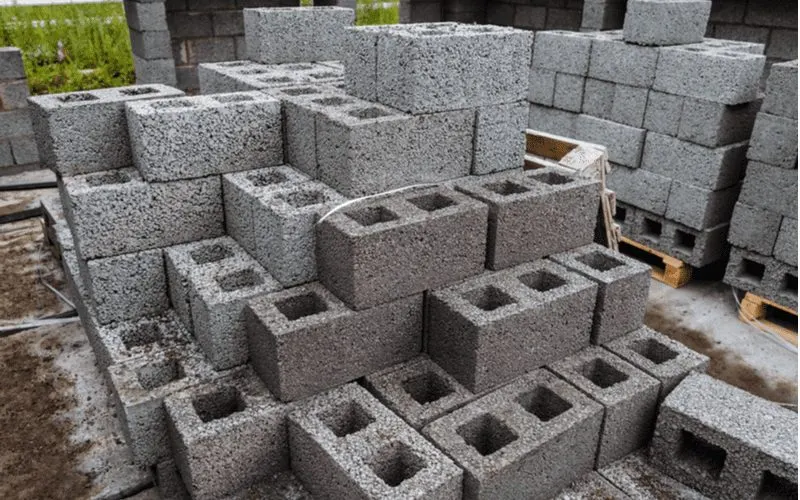
Aleksey Mantrenin/Shutterstock
Here are the main types of cinder blocks:
1. Hollow Blocks
Hollow blocks are the most common type of blocks and are often used to construct columns, foundation structures, etc. Also, they are great for forming basements as they have remarkable strength characteristics.
Primarily, hollow blocks are used for constructing partitions and fences. They are pretty lightweight as compared to other building materials.
2. Decorative Blocks
These blocks have a unique decorative coating on one or both sides. The decorative layer can resemble different textures, such as plaster or stone.
Keep in mind that decorative blocks tend to absorb moisture, making them unsuitable for the exterior walls of a building unless you apply a waterproof sealant.
3. Partitioning Blocks
When partitioning a blockhouse, you need to use partitioning blocks. These blocks make it easier for one to even out interior walls so they look neat. They are lightweight and have a more effortless and quick installation process.
4. Foundation Blocks
Foundation blocks are solidly compacted to prevent them from collapsing. They are used to lay the foundation of a building.
5. Ragged and Chipped Blocks
These are relatively newer types of blocks. They have decorative surfaces that imitate crushed bricks. Often, these blocks are used to finish fences or build wall designs.
Different Materials for Cinder Blocks
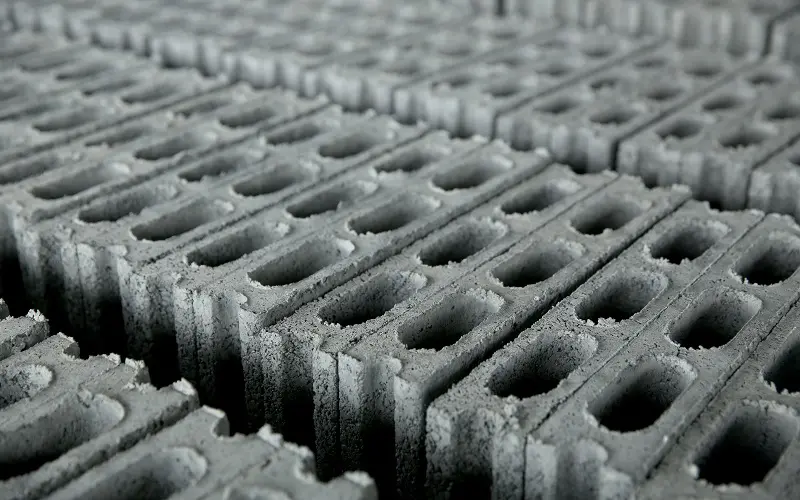
Jotika Pun/Shutterstock
Cinder blocks differ based on the material used.
1. Slag Concrete
Blocks made from slag concrete have a long service life and high thermal insulation properties, just like bricks.
2. Expanded Clay
Made from expanded clay, these are some of the most environmentally friendly units.
They are known to have remarkable thermal insulation qualities and a long service life. These ecologically clean blocks are lightweight and thus suitable for building high-rise buildings.
3. Arbolit
Blocks made of arbolit are in high demand today, as builders prefer them for being great thermal insulators.
On the downside, arbolit-based blocks don’t have a long service life. However, they can be made more durable by adding particular substances.
Cinder Block Home FAQ
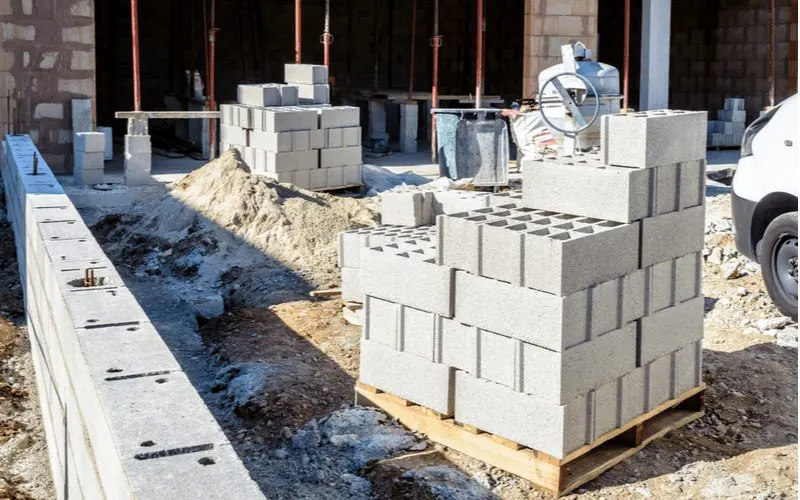
Olrat/Shutterstock
Are Cinder Block Houses Cheaper to Build Compared to Those with Wood Framing?
No! Cinder block houses cost more to build than wood framing.
In addition to the blocks costing more than natural wood, the cost of concrete fill, labor, and specialized equipment/tools make the cinder blocks more expensive than wood frames.
What Is the Average Lifespan of a Cinder Block House?
Many factors determine the longevity of a cinder block house. Predominantly, the quality of blocks influences the longevity of a home. In addition, the craft and expertise of the builder will affect how long the house will last.
Other variables at play here include house location, drainage, and type of soil. It's essential to mention that cinder blocks, although durable, need protection from weather elements.
You'll need to apply a damp-proof membrane and waterproofing coating at least once a decade.
Overall, cinder block houses can't outlast concrete blocks, which have a lifespan of over 75 years. Therefore, you can expect a cinder block house to last fewer years.
How Do You Keep a Cinder Block House Warm?
Although cinder blocks have good thermal insulation, which means they can keep your house cool in the summer, they are unable to keep the house warm during winter.
The hollow part transfers heat to either side of the walls, making it challenging to heat the indoor environment when the weather outside is chilly.
There are several methods of insulating cinder block homes, including sealing perforations on the blocks.
You can use a proven sealant or caulking to seal the inner surface of the walls. Make sure to look out for perforations around pipes, windows, and any outlets letting air into the house.
Also, you can use a rigid foam to insulate the interior walls. Insulation foams for cinder blocks are available in different sizes and can help reduce heat transfer between the inside walls and outer parts.
Additionally, you can insulate both the exterior wall and inside wall with vinyl siding. It'd be best to leave the work of installing insulation systems to professionals for you to get the best finish possible.
Is A Block House Cheaper To Build?
When time is of the essence, building a house with cinder blocks requires less time to construct than homes made from concrete blocks and wood.
Interestingly, the lower cost not only has to do with the lower labor cost associated with building a block house that takes less time to build—the materials factor in as well.
The blocks require less cement to interlock and therefore significantly reduce the overall cost of building cinder block houses.
In recent times, this is particularly beneficial since lumber costs have soared making traditional homes very expensive to construct.
Is A Concrete Block House Good?
A concrete block house is good from an economic and strategic design standpoint. Economically, a concrete block home is cheaper to construct because of the less time it takes to construct the home and the lower labor cost that results from it.
Moreover, it takes considerably less concrete to complete the build, and therefore you have money.
A block house is also good because of its strength and ability to endure harsh weather. Block homes are wind and water-resistant, making the energy bills significantly lower than traditional homes.
The conditioned air that your HVAC system works so hard to create stays within the home unable to escape through cracks and crevices.
Final Thoughts
So, should you consider a cinder block house?
That really depends. If you live in the Midwest, a block home is worth considering due to its structural integrity. And in today’s climate, lumber costs are extremely high.
While block was historically more expensive than wood, it might actually be a wash for the foreseeable future.
So it’s worth considering as an alternative to a traditional lumber home.

